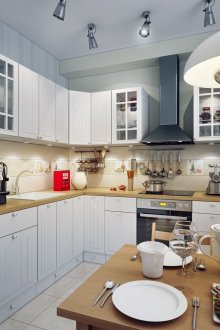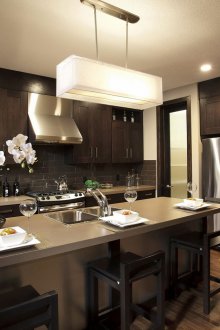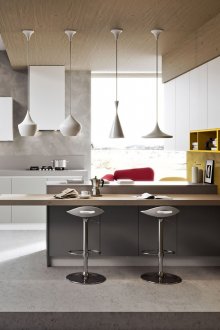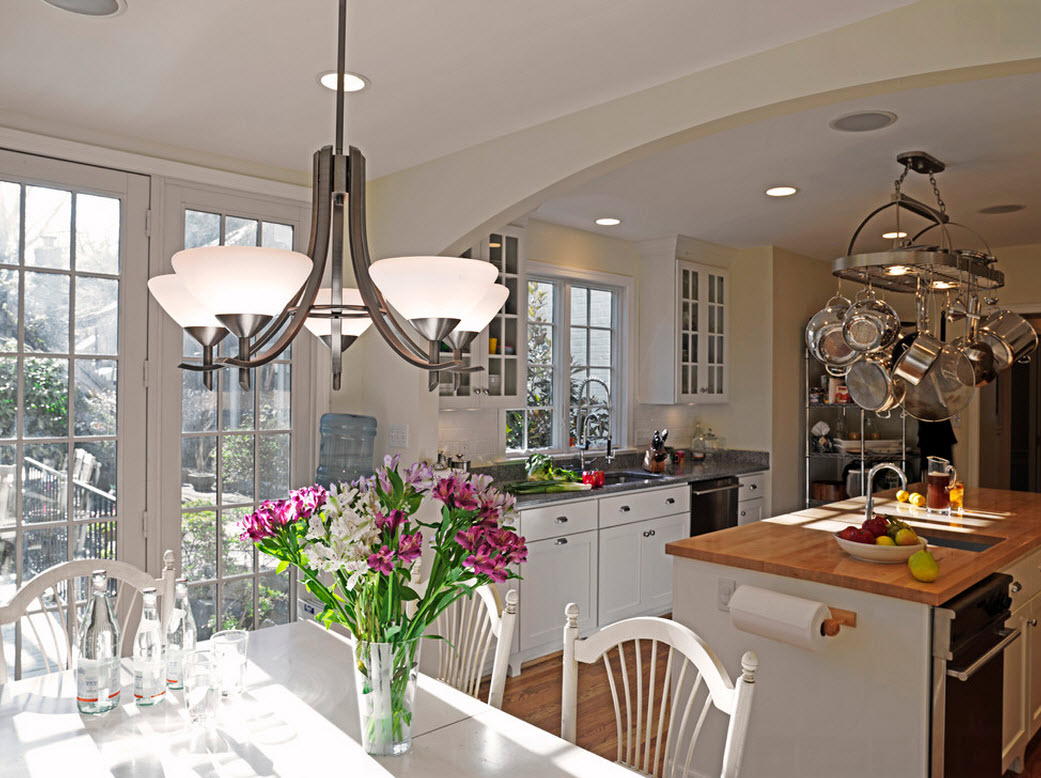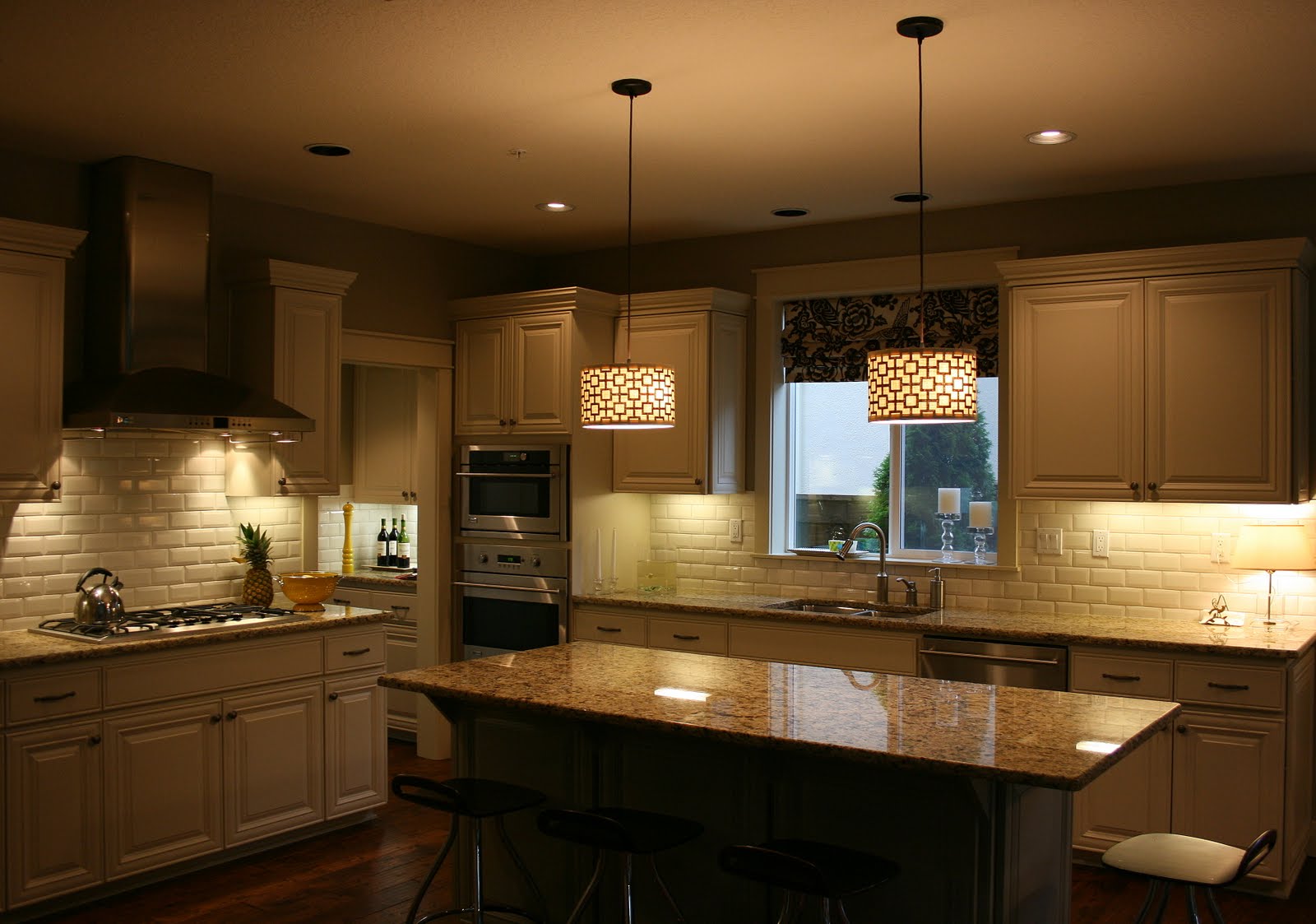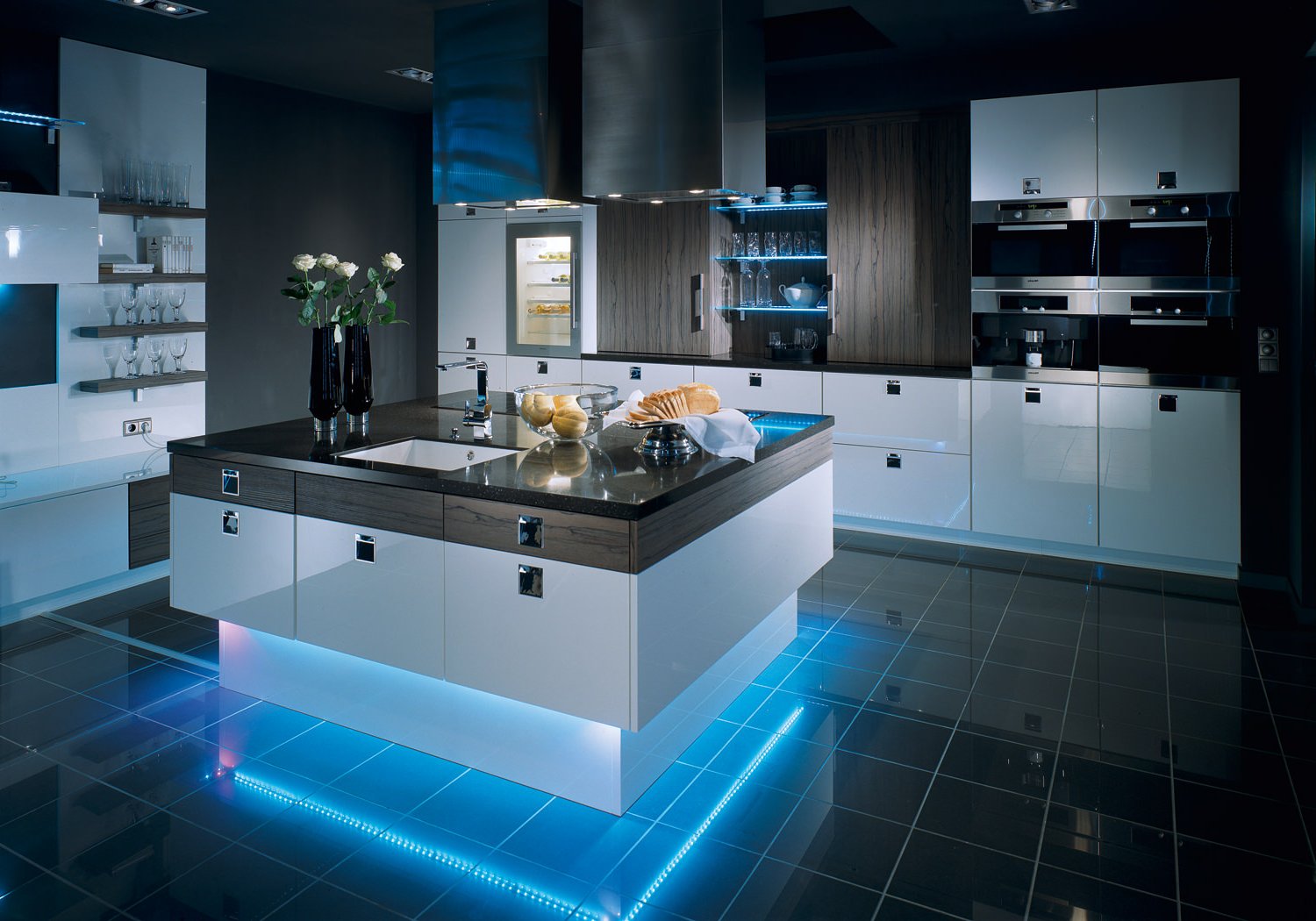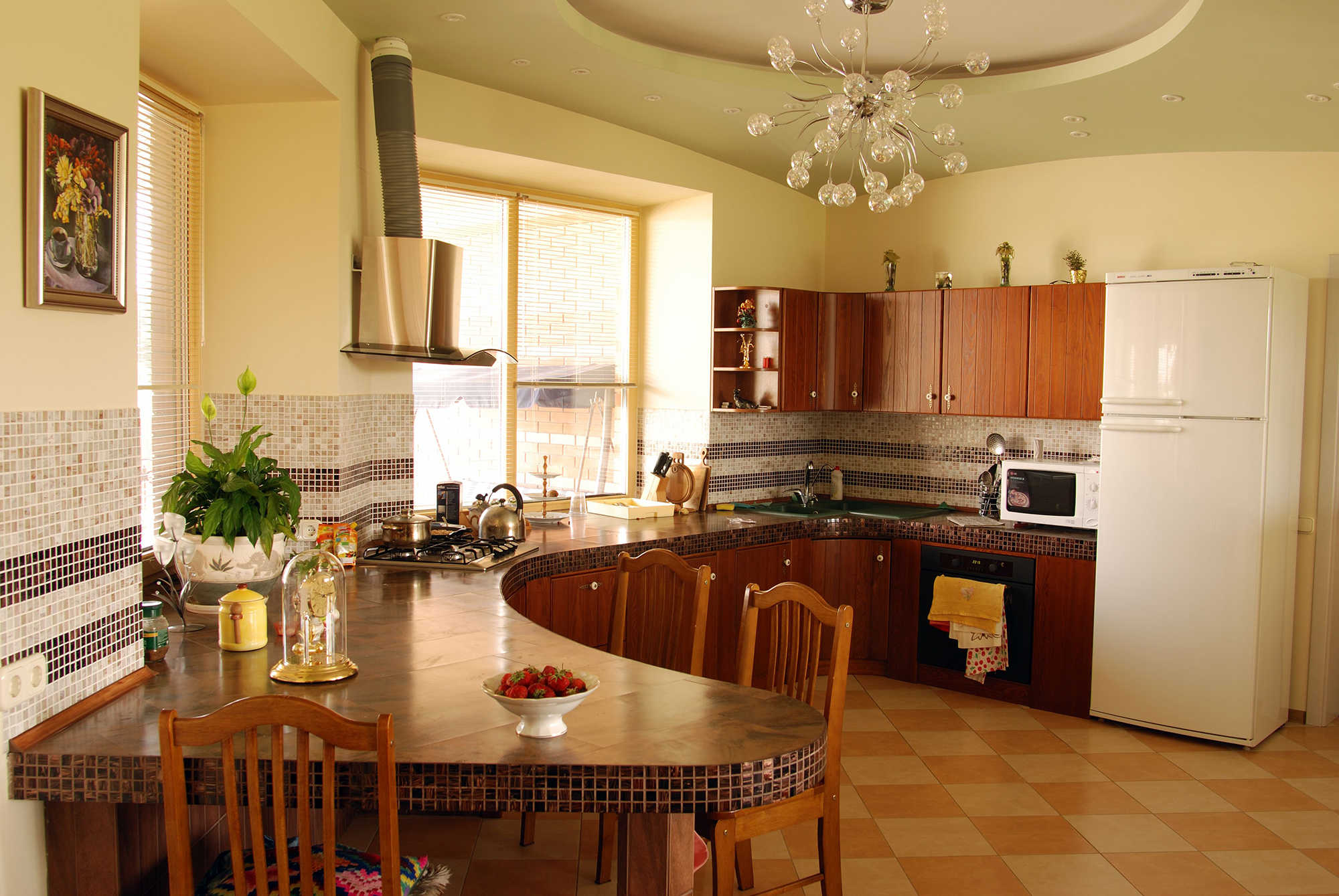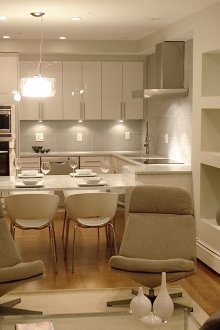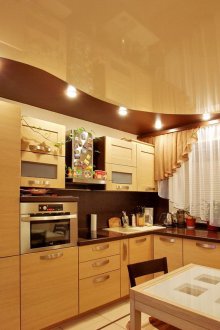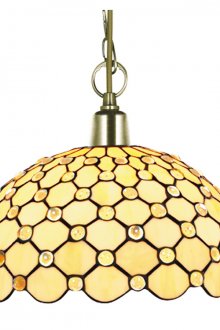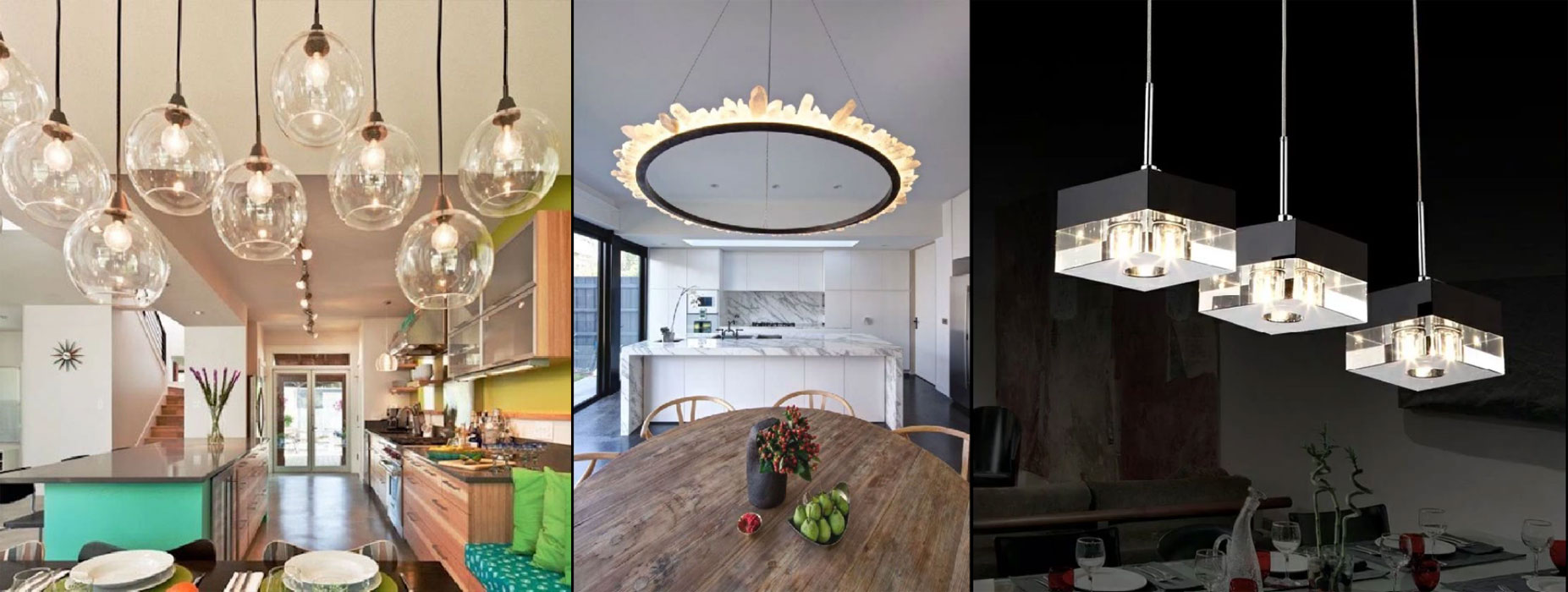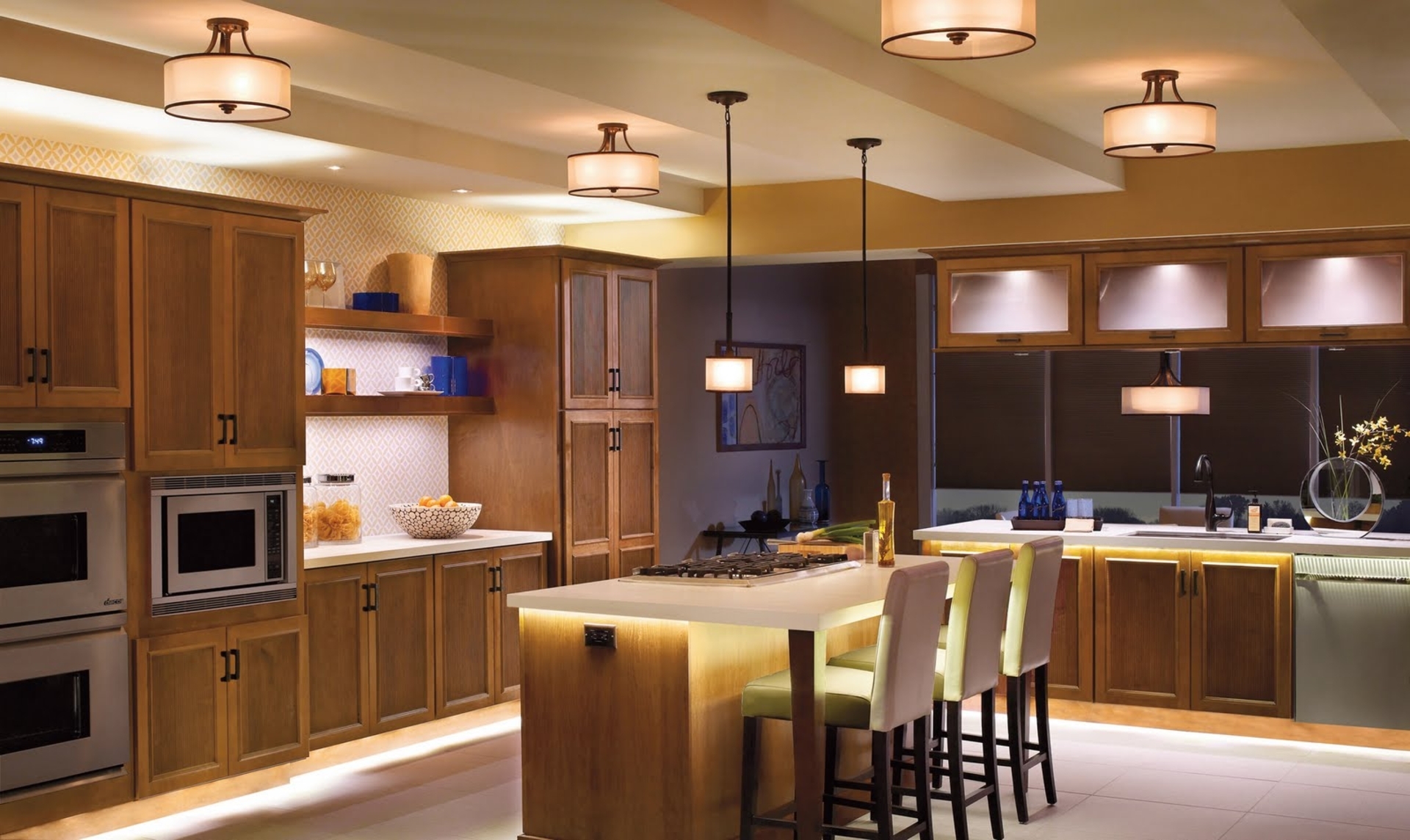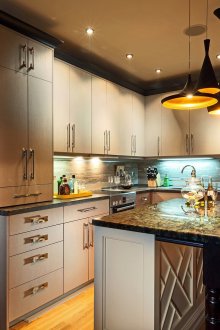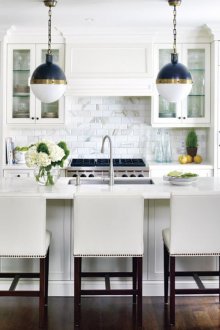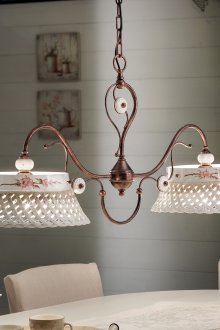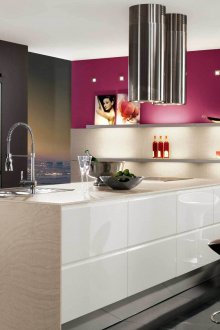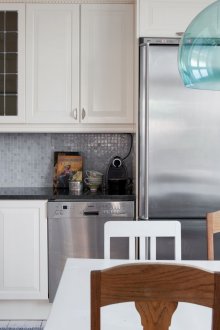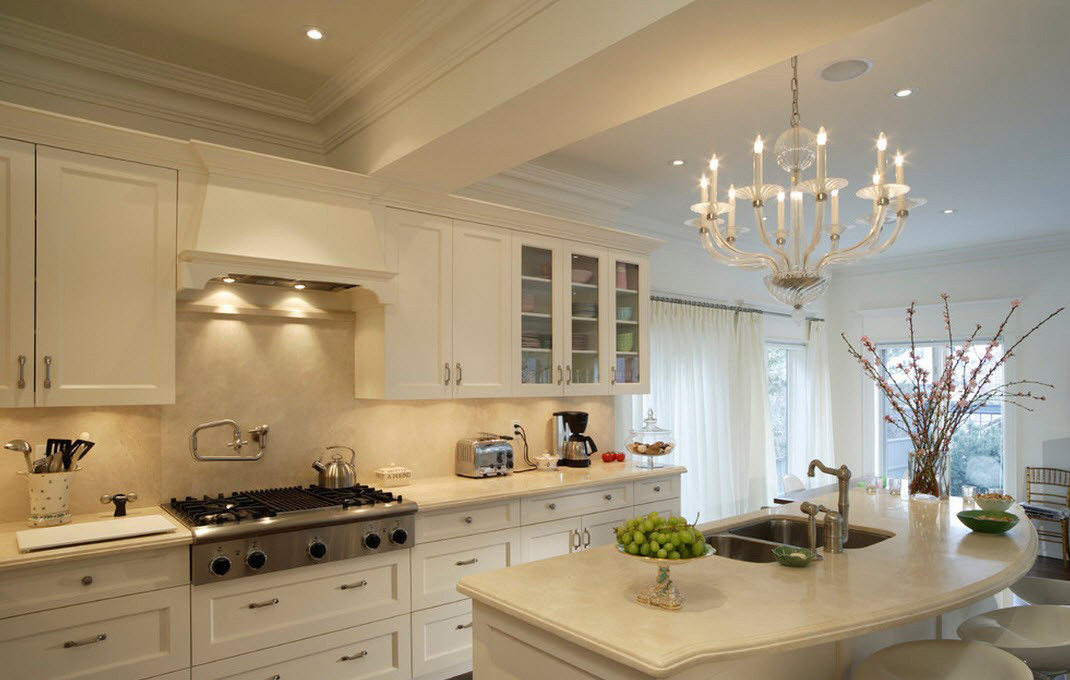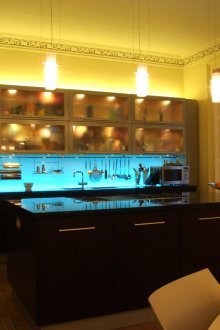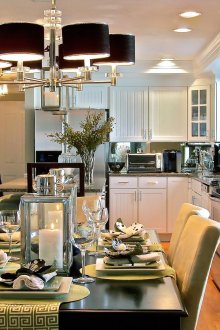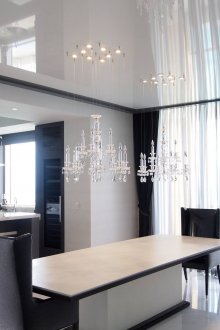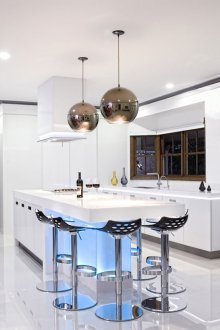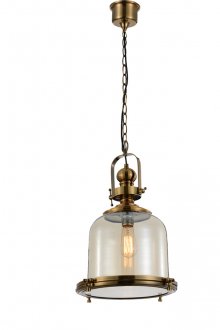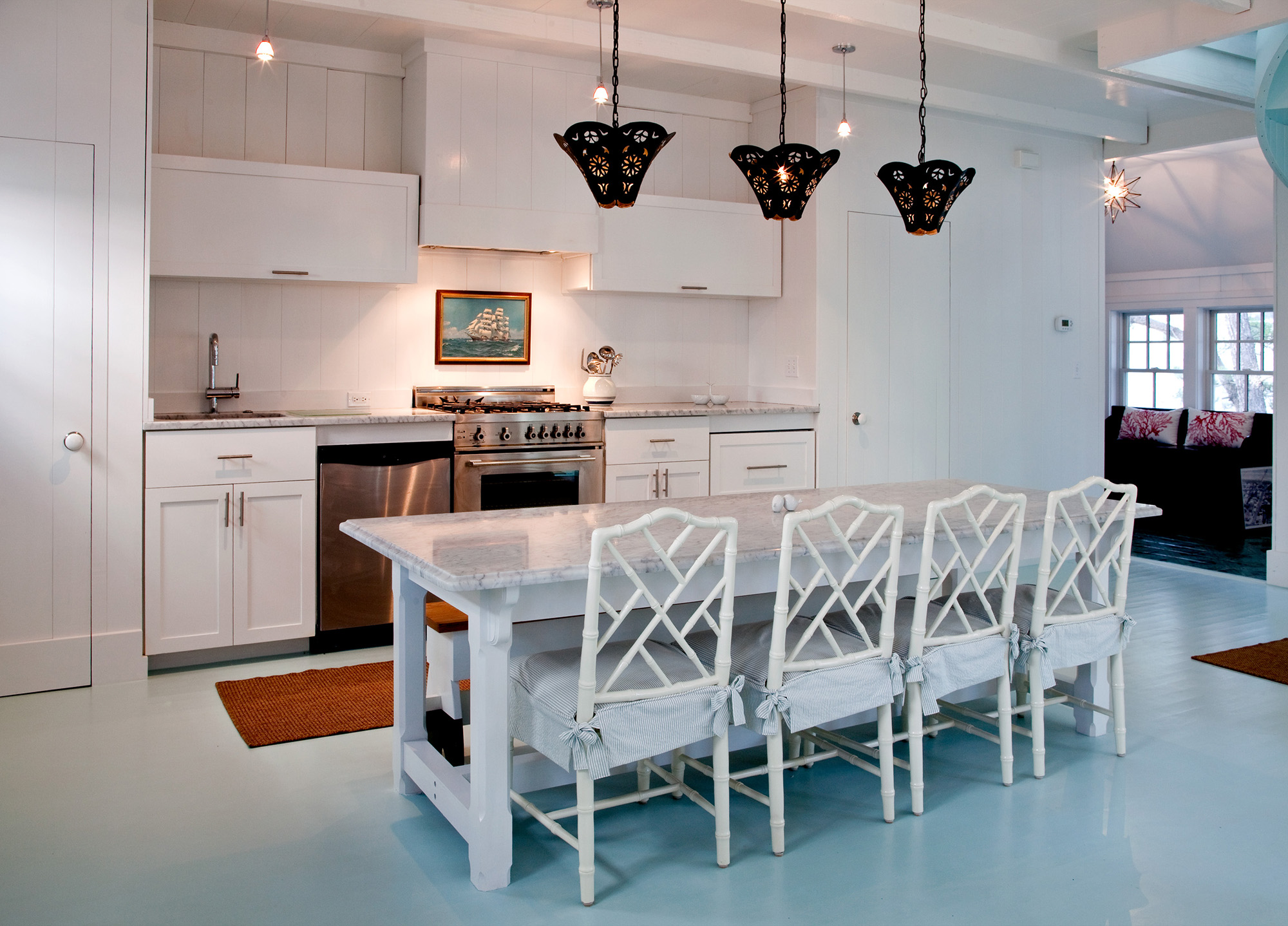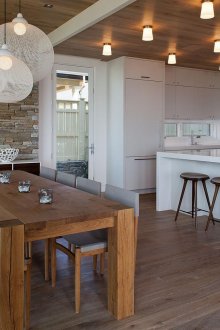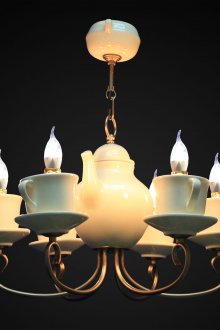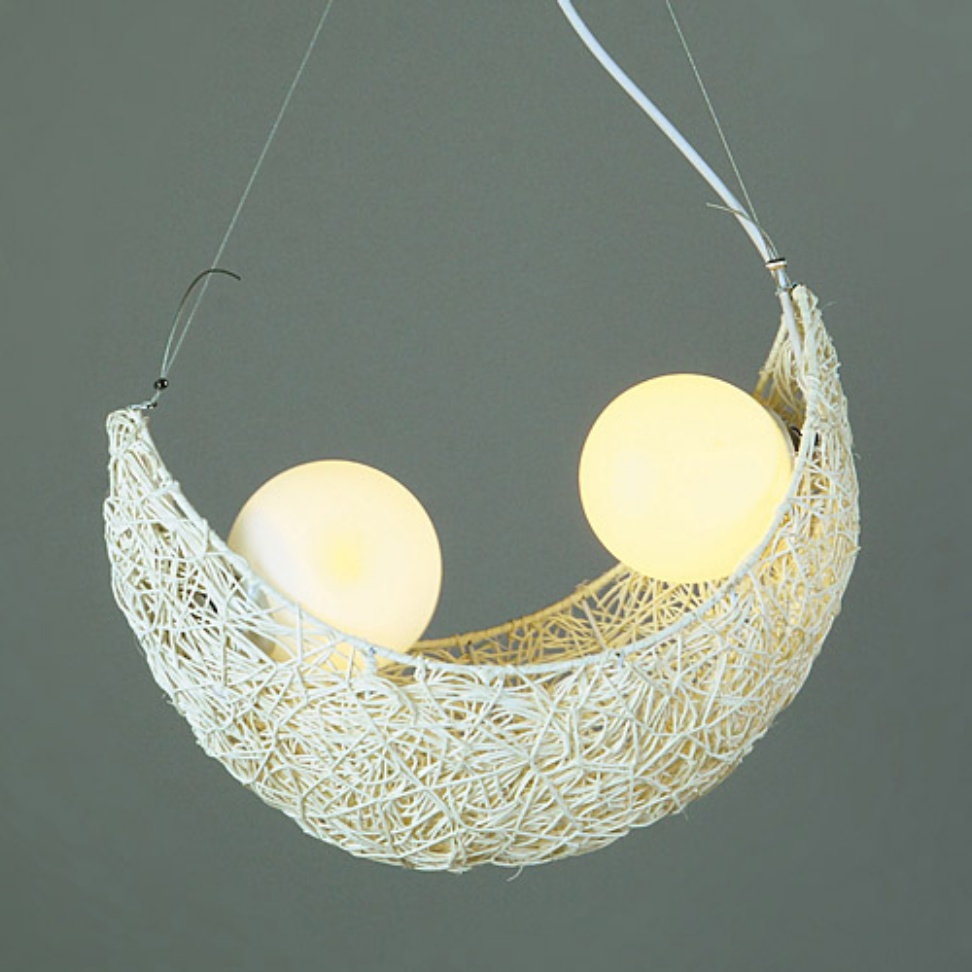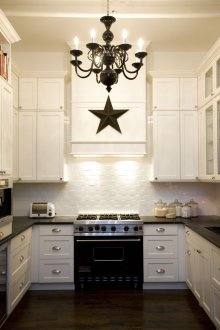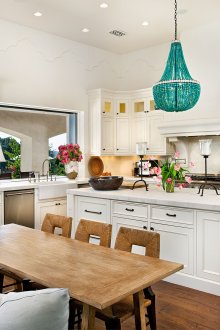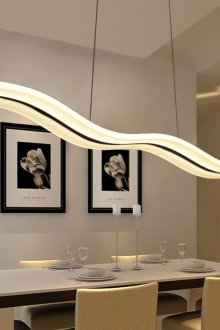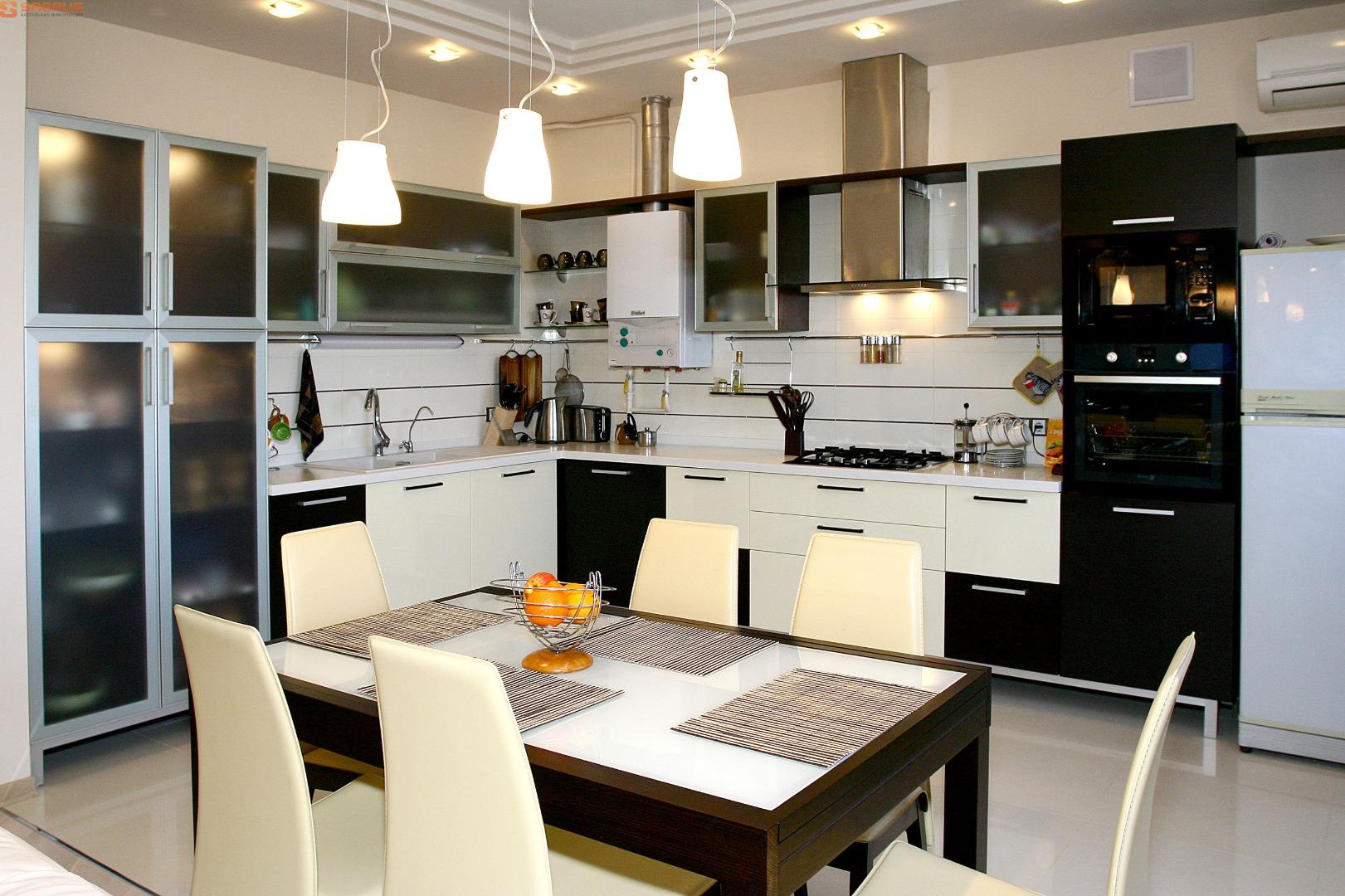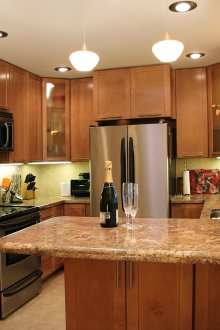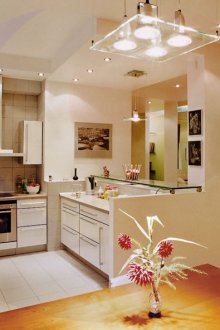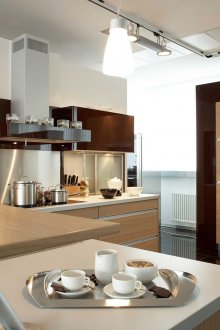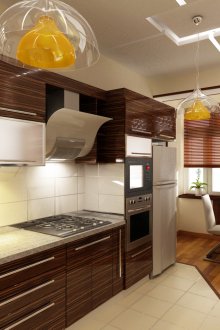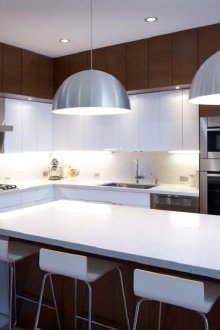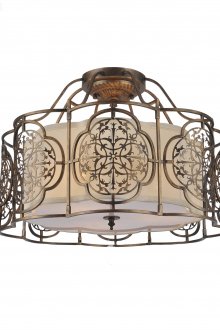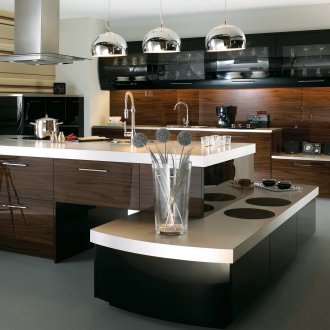Lighting in the kitchen (50 photos): beautiful examples and lighting design
Content
The successful design of a small or large kitchen consists of many nuances: functional furniture, quality equipment, harmonious color combinations and a bright idea. Natural and artificial lighting in the kitchen is an equally important aspect of comfort and convenience. This room combines various zones: worktops, hob, storage space for equipment and products, a dining group. The optimal solution is multi-level lighting, the plan of which is developed at the stage of creating a designer kitchen project.
Requirements for general and local lighting of the kitchen
General lighting in the kitchen is traditionally performed by ceiling lights. Options can be different: from a classic chandelier to modern spots or spotlights. Their task: to organize even diffused lighting. For a small kitchen, it’s enough to choose one effective lamp, for modern spacious layouts, it is worth taking care of additional elements.
Local lighting gives directional light to individual sections of the kitchen: along the work surface, for washing, above the dining table, inside cabinets and drawers. For this purpose, small fluorescent, spot, LED lamps are ideally suited. All types of electrical appliances must meet operational requirements: tolerate high humidity and frequent cleaning.
The design of the fixtures is selected in accordance with the interior of the room, while it must be taken into account that they provide the most appropriate natural lighting: moderate brightness and natural warm colors do not distort the color of products and ready-made dishes, emphasize comfort and auspicious atmosphere.
Kitchen lighting fixtures for different types of ceilings
The choice of a luminaire depends on individual preferences, the estimated budget, resistance to increased temperature and humidity, the type of ceiling coating.
- The traditional painted (whitewashed) ceiling is less suitable for design refinements, since it does not have technological space. Its standard design is a pendant lamp or a chandelier.
- Gypsum plasterboard ceiling (GVL) is resistant to high temperatures and is fixed at some distance from the base surface. On it you can place any fixtures and lamps.
- LED lights are usually installed on the stretch ceiling, which do not create a high degree of heating.
- Slatted ceilings are perfectly combined with any type of lighting fixtures.
Planning for kitchen lighting: basic rules
The kitchen design plan needs to be developed before the start of the repair, since the organization of lighting is connected with the electrical work. To prevent a mismatch between the wiring and the connection points of the lamps, sockets and switches, the marking for the electrical wiring is carried out after the kitchen design is fully developed and the furniture layout plan is taken into account.
The secret to quality kitchen lighting is to follow a few rules:
- To control the brightness of the lighting, a switch with a rheostat should be provided.
- For a small classic kitchen, the general lighting can be provided with one central lamp.
- In a spacious room, it is advisable to place the chandelier directly above the functional areas.
- For a low ceiling, do not choose long chandeliers and overload it with a large number of lamps. The same rules are also relevant for a small kitchen.
- Busbar systems of several luminaires with a swivel design can simultaneously act as general and local lighting, as the lamps are easy to direct to any functional area.
Worktop lighting
The kitchen room is conditionally divided into three functional areas: storage of equipment and products, cooking, as well as a lunch group. The priority is local lighting in the kitchen, lighting is only an auxiliary solution.
The most convenient option for lighting worktops located along the wall is fixtures built into the bottom of the wall cabinets. They do not take up free space, do not interfere with the use of inventory and perform normal work. Equally convenient are flat wall lamps that are at the level of the kitchen apron. Recently, decorative lighting of the working area is carried out by LED strip: it is easily mounted and effectively decorates the interior. If for some reason it is not possible to install autonomous lighting devices, portable lamps on clothespins can replace them.
For island kitchens, more varied options are available. A number of lamps on long cords look beautiful and exquisite. Of great functional importance will be the pendant design with spotlights, which can be used as a holder for kitchen accessories.
Dining area lighting
The choice of a luminaire for the dining area dictates the interior of the room, its size and location of the table.
If the table is installed close to the wall, wall lights will look most spectacular. They are located at a low height from the dining table. Good quality lighting and create spotlights.
The table, which occupies a central place in the kitchen, allows you to choose more sophisticated options: a large low lampshade located above the central part of the countertop, a series of single lamps along the table, originally located spotlights, systems on the bar. An additional decor of a massive table will be lamps in the form of candles.
For a small kitchen, where a small dining table does not have a permanent place, there is no need to create additional zoning with lamps.
Decorative kitchen lighting
The kitchen is a functional room. It can be called not only a working area, but also a place to relax. Many important events take place here: a cozy family dinner, romantic night tea drinking, funny gatherings with friends. It would be nice if the interior of the room matches the mood. To embody this opportunity, decorative lighting and examples of designer design are suitable.
As a decorative illumination, you can use elongated fluorescent lamps, multi-colored neon tubes, LED cord. When the lighting option is selected, it remains only to translate decorating ideas.
- Ceiling. The multi-level suspended structures inherent in stretch and plasterboard ceilings are best suited for decorative lighting. Light sources are placed around the perimeter of the ceiling, at the junctions of individual elements or in curved niches.
- Walls. An excellent wall decor are classic sconces, light fixtures of a reflected color, in which the light flux is directed towards the ceiling. The presence of a rheostat allows you to set the desired mood in the room.
- Furniture.Most modern kitchen sets already have built-in decorative lighting that illuminates the inside of glazed cabinets, open shelves. The furniture elements in which the bottom is decorated with LED strip look elegantly: they acquire visual weightlessness.
- Floor. Decorative lights can be placed on the floor: flush with the surface or in the recess. For the first option, it is advisable to choose spotlights, whose strong glass is able to withstand loads, ceramic tiles with built-in LEDs. Embedding a light decor into recessed floor structures is an unusual and striking design decision.
